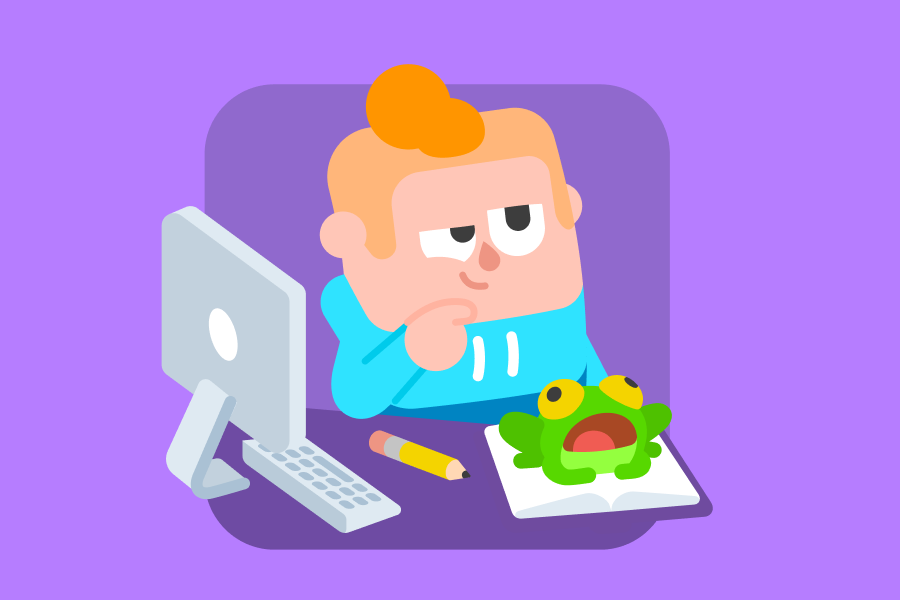At Duolingo, we're serious about learning, but that doesn't mean we can't have fun while we're at it! You've probably seen us get pretty silly on social media and especially on April Fools' Day, and maybe you've encountered our quirky sense of humor in your own lessons, too. In 2020, some of our goofiest sentences suddenly took on new meaning in the context of a global pandemic, and in December 2020, Duolingo learners nominated their favorite sentences to be in the running for the Most 2020 Phrase. It was no surprise that many of the contenders were some of these oddballs:
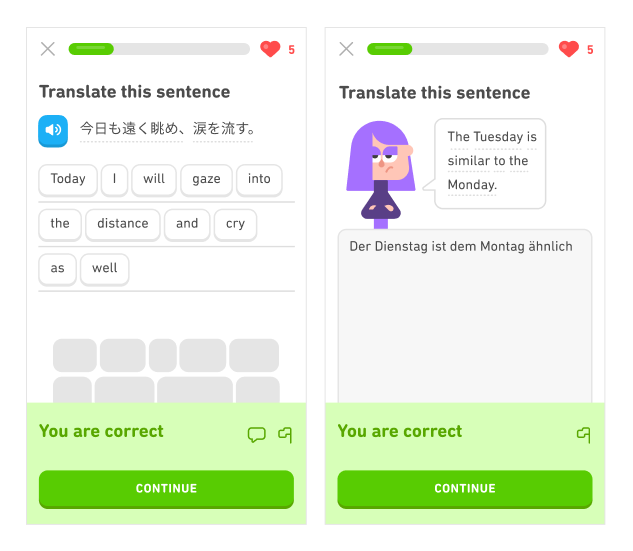
In the end, the winner was clear: I am eating bread and crying on the floor was voted by learners as the Most 2020 Phrase on Duolingo, and to celebrate we created a limited-edition tote bag in the perfect size for carrying loaves and tissues.
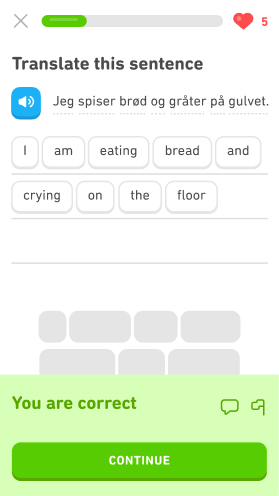
|
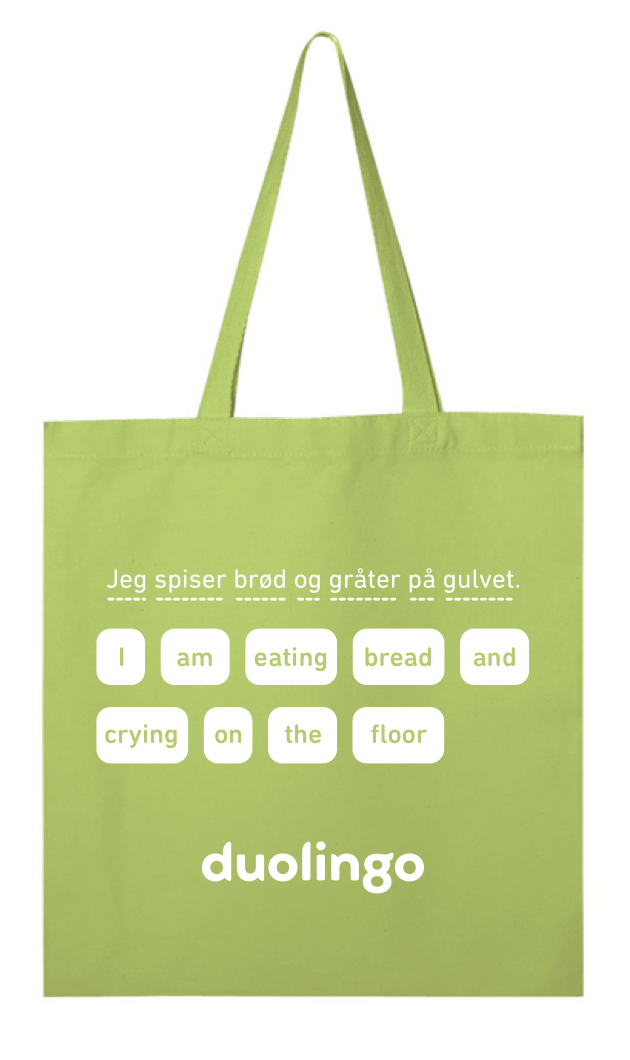
|
But what's really going on with these quirky sentences? Why do they show up in language lessons at all? Is there any actual learning value in having them in there? The answer is yes! In this post, we'll tell you how those sentences can actually help your learning and how they get into Duolingo courses.
Lighthearted learning
At Duolingo, we know that the best learning happens when you're engaged and excited about what you're studying. After all, there are a lot of demands on your attention! (We see you, memes.) That's why we want our courses to include all different kinds of language: the expressions and phrases that you'll memorize (mucho gusto, qué tal) as well as useful patterns that you'll see all over the language (like verb endings). Finding silly and surprising sentences in a lesson keeps you on your toes and engaged in your learning.
Quirky sentences also have a hidden superpower: they are memorable! They work as a grammatical “anchor,” helping you remember key examples of essential grammar concepts. Right there, hidden in plain sight in sentences about horses, apples, and mothers-in-law, are verb conjugations, word order rules, and vocabulary that can be swapped in and out to make even more sentences than just the silly one you see. Learning from these sentences helps you remember the grammar for next time you need it, even if you're laughing (or rolling your eyes) through the lesson.
Our goal is to get you communicating and expressing your own ideas in the language you're learning, and quirky sentences are one tool to get you there. We don't expect you'll actually need to use these exact phrases out in the world, but communication is about learning rules and flexibility. If you see a quirky sentence that grabs your attention—maybe Tu habites avec un cheval ? ("You live with a horse?")—you're actually learning how to ask a direct question, whether "horse" is masculine or feminine, and what verb ending goes with "you." And if you decide to travel to France and make a new friend, you might not ask them if they live with a horse but you will be able to ask them “Do you live with your parents?” or “Do you live with a friend?” So it's ok to embrace the hilarity and keep saying those sentences to yourself!
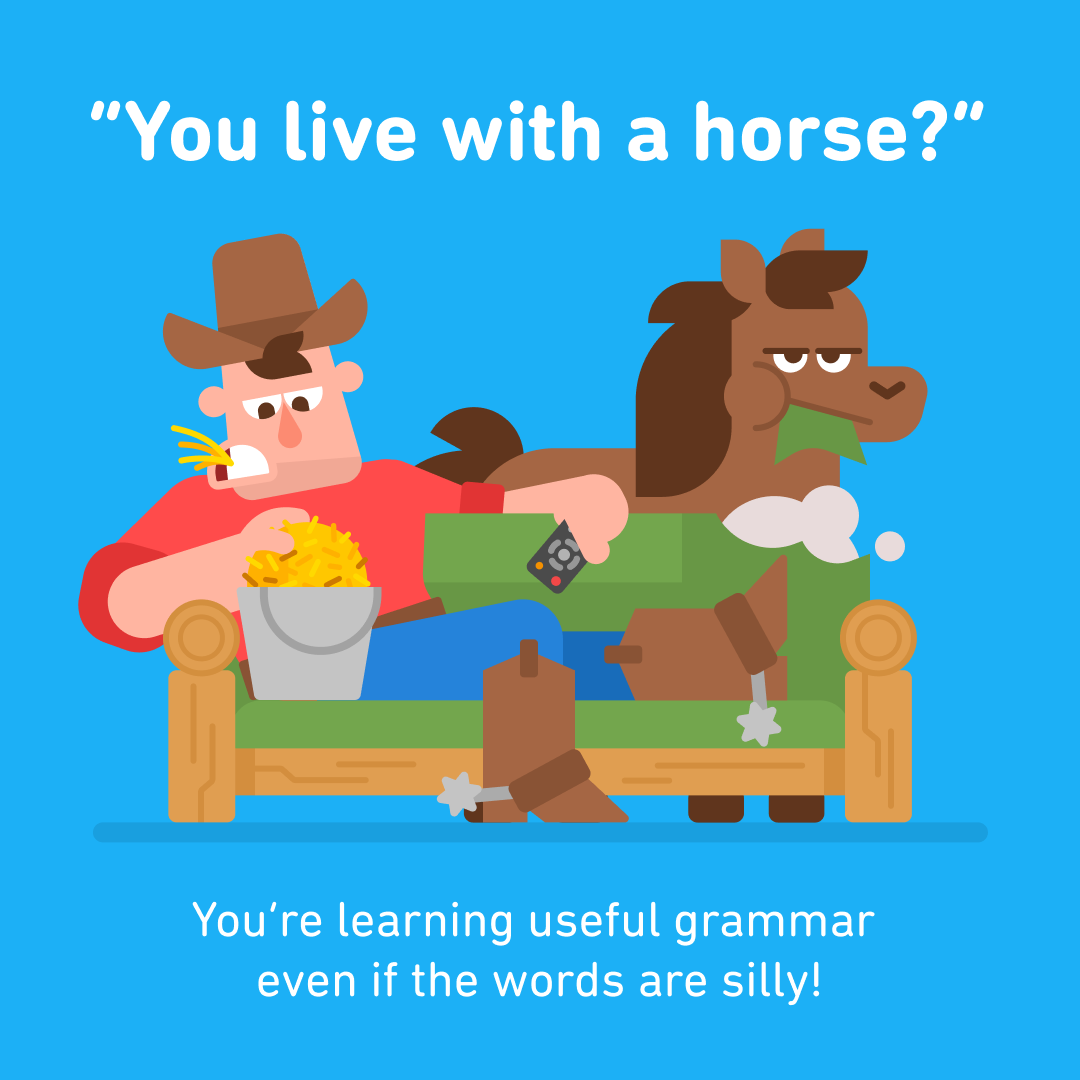
How silly sentences are born
From the very beginning, Duolingo has embraced silly, unexpected, and sometimes downright sassy sentences in all our courses, like “The nineties called and wanted its shirt back” from our Swedish course. But how do these sentences fit into the bigger picture of course creation?
When we write lessons for Duolingo, we always start by thinking about what you'll want to be able to do with the language (a "learning objective"). Our first goal is to create a learning experience that will allow you to practice the kinds of conversation that you'll have in everyday life. Next we plan out the words and grammar that will get you communicating, and then we start having a little fun. Our teams of talented writers and language teaching experts write hundreds of sentences, following a slew of constraints that you can read more about here.
As our writers and language experts develop lessons, they work on balancing really useful phrases that you can use immediately, like ¿Cómo se llama tu hijo? "What is your son's name?" with the quirky and fun sentences that stick in your memory. We want our content to be as full of personality as we are! Our writers' first priority is always the lesson's learning objective, but after that, they are encouraged to develop humorous, interesting content, with some quirk mixed in.
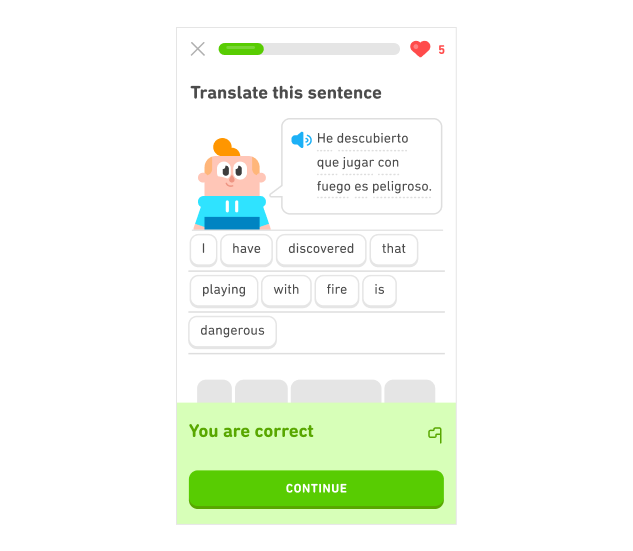
Both set phrases and less predictable sentences are important for language learning and for preparing you to encounter the kinds of surprises, humor, and, yes, grammar that you'll come across in movies, music, comedy, and online forums. They help you learn and remember key vocabulary and grammar, and they give you the practice you need to communicate in everyday life. And, of course, enjoying your learning journey is good for motivation, too!
So as you study on Duolingo, be on the lookout for some delightfully quirky sentences. Maybe you'll even unearth one of our latest gems:
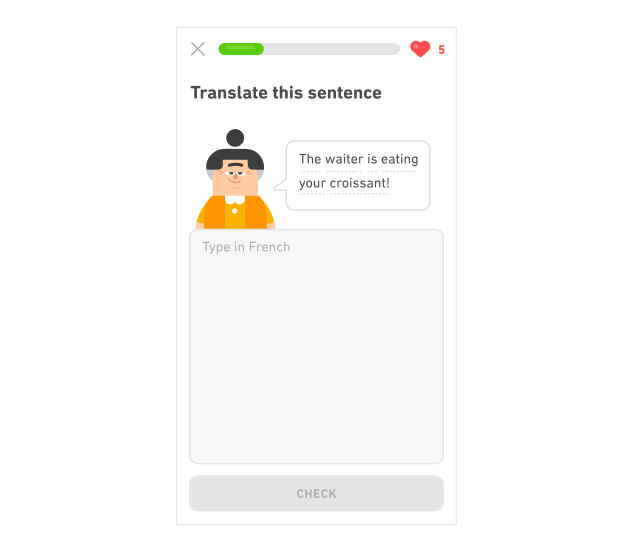
Language learning is hard, so we made it fun!
Flexibility is an important part of language learning, and that's why our Duolingo courses balance the most common phrases with silly sentences that get you learning and remembering the building blocks you need to communicate. Our quirky sentences stick in your memory, getting you to notice and remember important grammar patterns while encouraging you to enjoy your learning.
So next time you’ve got a sentence like ¡Pedro, baila con tu novia! "Pedro, dance with your girlfriend!" stuck in your head, remember to laugh, and also remember that sentence! It will pay off in your language learning (and maybe also in life 😉).
